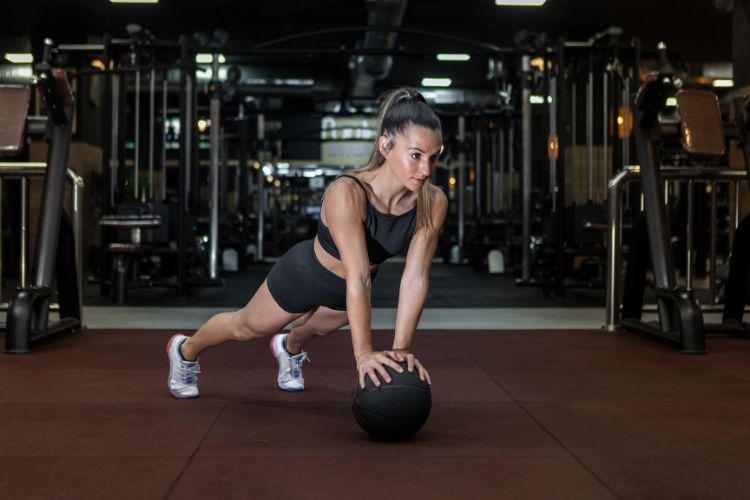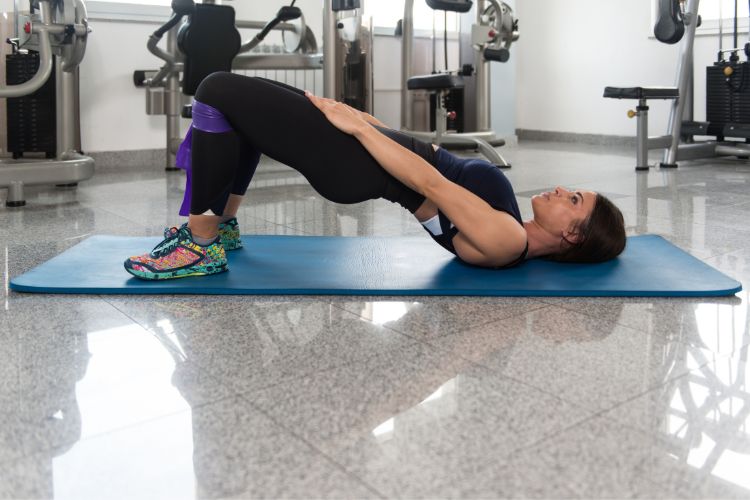Sign up for workout ideas, training advice, reviews of the latest gear and more.






When it comes to building a strong, toned, and shapely lower body, glute bridge workouts are a game-changer for women. Whether you’re a fitness enthusiast or a beginner, incorporating glute bridges into your routine can help you achieve your goals. This blog post will explore the benefits of glute bridges, how to perform them correctly, and various variations to keep your workouts challenging and effective.
Glute bridges are a strength-training exercise that primarily targets the gluteus maximus, the largest muscle in the buttocks. They also engage the hamstrings, core, and lower back, making them a fantastic compound movement for overall lower body strength. The exercise involves lying on your back with your knees bent and lifting your hips toward the ceiling while squeezing your glutes at the top of the movement.
For women, glute bridges offer numerous benefits beyond just aesthetic appeal. Strong glutes contribute to better posture, reduced risk of injury, and improved athletic performance. Additionally, glute bridges can help alleviate lower back pain by strengthening the posterior chain, which includes the glutes, hamstrings, and lower back muscles.
One of the primary benefits of glute bridges is their ability to activate the glute muscles effectively. Many women struggle with underactive glutes due to prolonged sitting or improper training techniques. Glute bridges help “wake up” these muscles, ensuring they are engaged during other exercises and daily activities.
Strong glutes play a crucial role in maintaining proper posture. They help stabilize the pelvis and support the lower back, reducing the likelihood of slouching or developing postural imbalances. By incorporating glute bridges into your routine, you can strengthen these muscles and promote a more upright and confident posture.
Weak glutes can lead to overcompensation by other muscles, such as the hamstrings and lower back, increasing the risk of injury. Glute bridges help balance muscle strength around the hips and pelvis, reducing the strain on surrounding muscles and joints. This is particularly important for women who engage in high-impact activities like running or jumping.
Strong glutes are essential for power, speed, and agility. Whether you’re a runner, dancer, or athlete, glute bridges can enhance your performance by improving your ability to generate force from your lower body. This translates to better sprint times, higher jumps, and more explosive movements.
Let’s not forget the aesthetic benefits! Glute bridges are highly effective for building a rounder, firmer, and more lifted butt. By consistently incorporating glute bridges into your workouts, you can achieve the toned and shapely glutes many women desire.
Before diving into advanced variations, it’s essential to master the basic glute bridge. Here’s a step-by-step guide to performing the exercise with proper form:
Once you’ve mastered the basic glute bridge, it’s time to explore variations that can add variety and intensity to your workouts. Here are some popular glute bridge variations for women:
The single-leg glute bridge is an excellent variation for isolating each glute and increasing the difficulty of the exercise.
How to Perform:
Benefits: This variation challenges your balance and stability while intensifying the focus on each glute.
Adding resistance, such as a dumbbell or barbell, can increase the intensity of the glute bridge and promote muscle growth.
How to Perform:
Benefits: The added resistance helps build strength and muscle mass in the glutes.
Elevating your feet on a bench or step increases the range of motion and further engages the glutes.
How to Perform:
Benefits: This variation increases the stretch on the glutes at the bottom of the movement, enhancing muscle activation.
Using a resistance band adds extra tension to the glutes, making the exercise more challenging.
How to Perform:
Benefits: The resistance band increases glute activation and helps target the outer glutes.
The marching glute bridge adds a dynamic element to the exercise, challenging your core and stability.
How to Perform:
Benefits: This variation enhances core stability and coordination while targeting the glutes.
To maximize the benefits of glute bridges, it’s essential to incorporate them into a well-rounded workout routine. Here are some tips for integrating glute bridges into your fitness plan:
Use glute bridges as part of your warm-up to activate the glutes before more intense lower body exercises like squats or deadlifts. Perform 1-2 sets of 10-15 repetitions to get the blood flowing and prepare your muscles for the workout ahead.
Include glute bridges in your strength training routine, focusing on progressive overload. Gradually increase the resistance, repetitions, or sets over time to continue challenging your muscles and promoting growth.
Combine glute bridges with other exercises in supersets or circuits to keep your workouts dynamic and efficient. For example, pair glute bridges with squats, lunges, or step-ups for a comprehensive lower body workout.
Use glute bridges as part of your cool-down to stretch and relax the glutes after an intense workout. Perform slow, controlled repetitions to help reduce muscle tension and promote recovery.
While glute bridges are relatively simple, there are some common mistakes to watch out for to ensure you’re getting the most out of the exercise:
Over-arching the lower back can place unnecessary strain on the lumbar spine. Focus on squeezing the glutes rather than relying on the lower back to lift the hips.
Avoid using momentum to lift your hips. Perform the exercise slowly and with control to maximize muscle engagement.
Failing to engage the core can lead to improper form and reduced effectiveness. Always draw your belly button toward your spine before lifting your hips.
Keep your feet flat on the ground throughout the movement. Lifting the toes can shift the focus away from the glutes and onto the quadriceps.
Glute bridge workouts are a powerful tool for women looking to build stronger, more shapely glutes while improving overall lower body strength and stability. By mastering the basic movement and exploring various variations, you can keep your workouts challenging and effective. Remember to focus on proper form, incorporate glute bridges into a well-rounded routine, and avoid common mistakes to maximize your results. Whether you’re aiming for better posture, injury prevention, or a toned backside, glute bridges are a must-have in your fitness arsenal. So, grab a mat, get into position, and start bridging your way to stronger glutes today!
Stay up to date on the latest women’s health, fitness and lifestyle trends and tips.